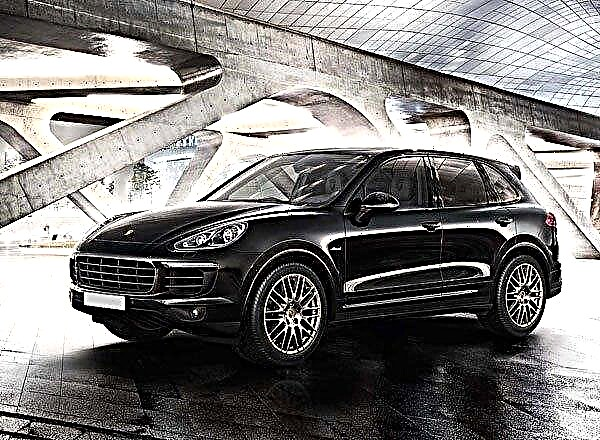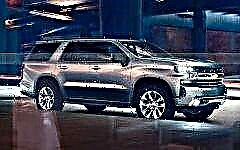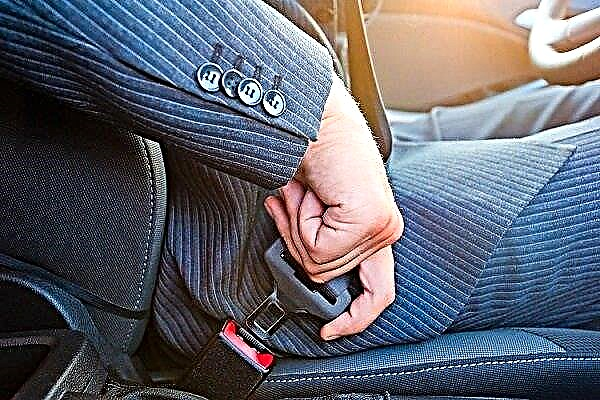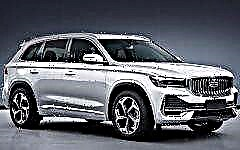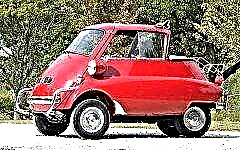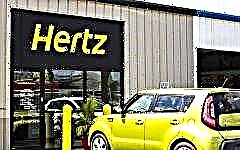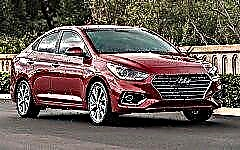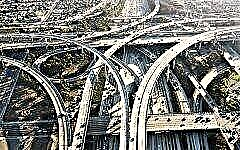

The content of the article:
- Swindon junction
- Cumulative junction in Los Angeles
- Ring around the Arc de Triomphe
- Meskel unregulated intersection in Addis Ababa
- Driveway at Gibraltar Airport
- Regulated intersection in Ho Chi Minh City
- Spaghetti in Louisville
- Boston South Bay Interchange
- Xin Zhuang Interchange in Shanghai
- Beijing-Hong Kong-Macau
The problem of road improvement is at least as old as the first car. Year after year, traffic becomes denser even on country roads, let alone busy highways!
All over the world there are a lot of road junctions, and since the peculiarities of traffic are different everywhere, the junctions can be very different.
Alas. The genius of engineering solutions does not always give rise to successful designs. In the world, there has long been a rating of the most difficult and problematic interchanges that can confuse even an experienced driver.
1. Swindon Interchange

This masterpiece of road engineering was built in Swindon, England in the early seventies of the last century and has puzzled many motorists since then. Roundabouts have long gained well-deserved popularity in many countries due to the fact that they do not have intersections requiring a full stop, as well as traffic lights.
The author of the junction is road engineer Frank Blackmore. While working on the design of the structure, he consistently added roundabouts to the traffic pattern, getting rid of straight intersections.
What does the horror of an ordinary visiting motorist look like? At first glance, simple: a large transport ring, made up of five smaller rings. The difficulty for drivers lies in the fact that here, as at most interchanges, there are no traffic lights, but as many as sixteen lines are indicated, requiring the driver to stop. Smaller rings in the common large one are marked only by marking elements.
Movement on small rings is carried out exclusively clockwise (which, in general, is logical, given the left-hand traffic of cars in the UK).
In the first years after the junction was put into operation, road police officers were on duty on it, whose duties were charged to guide and advise those drivers who found it difficult to find the correct route. Over the years, the cops have been replaced by road signs.
British insurers unanimously “subscribed” to the BBC news poll, claiming it was the worst road junction in the world. But at the same time, the efficiency indicators and the level of safety at the junction are by no means critical.
The secret, as usual, is simple - follow the rules:
- do not exceed the speed to avoid possible collisions;
- follow signs, arrows and lane markings;
- skip those who are already at the roundabout.
Over the years of the junction's existence, the locals have got used to this "brotherhood of the rings", although they have awarded the Swindon junction with the unflattering nickname "The Magic Carousel." However, perhaps this nickname was given to her by the tourists frightened by the seeming complexity?
Be that as it may, according to observations of car traffic, it was possible to establish that the presence of the Swindon Interchange significantly reduces congestion to this day.
2. Cumulative junction in Los Angeles

In the photo: The denouement of the name of Judge Predgerson
This cumulative junction near the Watts and Athens Los Angeles area was commissioned relatively recently - in 1993. The interchange is named in honor of Predgerson, the judge who considered the case on the construction of the I-105 highway - the one on which, along with the I-100 highway, the interchange is located.
The structure includes passenger and transit highways, a railway lane, and a metro line. The movement along this high, seemingly extremely intricate and therefore very impressive structure is possible here in all directions, that is, this is the so-called "complete denouement".
As conceived by the engineers, the junction can (and should) be passed without traffic jams and congestion, without demands to give way. The main task of the driver is not to miss the desired exit.
If the driver needs to exit onto a highway that does not have a connecting straight highway at the junction, he will have to go to the main connecting highway, and from there - to the desired exit. It can be difficult to find this “necessary exit” for those who are at this junction for the first time. That is why motorists, with their reviews about this node, contributed to the fact that it took second place in the ranking of the most problematic interchanges in the world.
As soon as it opened, the denouement attracted the interest of American filmmakers. A year after commissioning, the famous scenes of the film "Speed" were filmed on it, where a bus with a bomb flies over an unfinished fragment of an overpass.
But in fact, when the shooting was not over yet, the civil engineers coped with the unfinished fragment, so that the famous scene had to be partially "finished" on the computer.
After three years of operation, the junction received the Engineering Miracle award for its excellent road design. Thus, the Los Angeles government emphasized that the interchange helped solve the city's transportation problems.
However, this does not prevent the Pregerson junction from being considered one of the most difficult not only in the States, but also in the world: not everyone succeeds in understanding the jumble of multi-storey overpasses the first time.
3. Ring around the Arc de Triomphe

In the photo: the junction at the Arc de Triomphe
It comes as no surprise that one of the busiest roundabouts is in the heart of the French capital. For insurance companies, the circular traffic around Triumfalnaya Square has long been a "headache", a source of many accidents. A number of insurers even have a separate clause in their contracts, according to which the company is not obliged to cover damage if an accident occurred on this ill-fated circular traffic.
Twelve streets converge at this junction, including one-way streets (just imagine what it would be like for a tourist who sees the coveted exit and finds that it is a one-way street!).
Conventionally, the interchange is designed for 8-9 traffic lanes, but there are no markings that delimit the lanes. The ring does not have the status of the main road, which in fact means that the drivers themselves determine the priority of movement. Tourists and scooter drivers add to the chaos.
4. Unregulated Meskel intersection in Addis Ababa

In the photo: Meskel T-junction, Addis Ababa
Local drivers joke that in order to pass the Meskel intersection without any problems, you must at least be a native of Ethiopia in the fourth generation.
The eight-lane (just think about it: eight lanes in only one direction!) Movement most of all resembles a termite mound, on which thousands of insects swarm, for some magical reason they do not collide with each other.
And this despite the fact that the driving style prevails here, adopted in many countries of Asia and Africa: the constant signals and furious gestures of drivers seem to only add chaos to an already difficult road situation.
More than once, there have been ideas to install a traffic light on Meskel Square. But each time it turned out that such a solution would only exacerbate the problem: local drivers have long been accustomed to and do with virtuosity without such regulation of car traffic.
5. Carriageway at Gibraltar airport

In the photo: airport and roadway in Gibraltar
A scene from "The Adventures of Italians in Russia" is remembered by many: an airplane following a transport highway surrounded by cars amused the fans of this comedy a lot. But in Gibraltar they would hardly have laughed at this scene: they simply would not have understood what was funny. Well, the plane is on the runway. Well, road transport on the highway crossing this runway. What's wrong?
While it is normal for residents of most cities to wait for a barrier at a railway crossing to rise or a drawbridge across a river is brought down, it is normal for residents of Gibraltar to wait at the barrier until another airliner follows the runway.
The small area of the peninsula - only six and a half square kilometers - suggested to the road builders such an exotic solution. This denouement cannot be called especially "scary", but, nevertheless, somewhat frightening exoticism is present.
6. Regulated intersection in Ho Chi Minh City

In the photo: at the entrance to the intersection in Ho Chi Minh City
Despite the fact that this intersection is regulated, it will impress the tourist unaccustomed to such traffic no less, if not more, than the unregulated intersection in Addis Ababa.
A simple movement directly into the green light is not at all so simple here: at the same time, a lot of drivers tend to turn left. And since the traffic flow is very dense, the turners are not going to wait until it stops.
A distinctive feature of this intersection is the abundance of scooters and mopeds typical for Vietnam. Their mobility also "adds nerves" to car drivers.
7. "Spaghetti" in Louisville

Photo: Kennedy Interchange
In 1964, a very complex junction connecting three major freeways was put into operation in Louisville (USA). From a great height, this junction really resembles giant spaghetti casually thrown onto the city plane. Officially, the junction bears the name of John F. Kennedy, like the bridge of the same name nearby.
Unfortunately, over time it turned out that the construction of a traffic intersection in this place and this configuration was wrong. Located in downtown Louisville, the transportation hub hits the urban environment hard. Moreover, originally designed for 100 thousand cars per day, now the interchange has to withstand the flow of up to 300 thousand cars per day.
According to statistics from insurers and road safety services, accidents and car collisions occur at a junction almost twice as much as the national average.
In 2016, the Louisville authorities started talking about the reconstruction of the interchange. They wanted to start work in 2017, the state government allocated money for the reconstruction. The amount had to be mastered - $ 1.1 billion. But this price for the opportunity to "deal" with an environmentally harmful, dangerous and confusing denouement looks quite acceptable.
8. Boston South Bay Interchange

In the photo: road junction in Boston
And again - the southern states. The South Bay Interchange is part of the Great Tunnel of Boston (the most expensive American road project). The tunnel is an eight-lane highway.
The construction of the junction was stretched over 13 years - this is the only way to solve traffic problems during the construction process.
The junction includes four main lines and a railway. The throughput of the junction satisfies modern traffic, which is not surprising, given that the project is relatively “fresh”.
As in most cases of "terrible" interchanges, the Boston interchange is terrible only for those who inattentively follow the signs, road signs and markings. A missed turn can really make you suffer, finding the right road. But in general, any driver can cope with the denouement.
9. Xin Zhuang Interchange in Shanghai

Half a million cars a day - this interchange, built in the suburbs of Shanghai, withstands such traffic. Chinese road builders and engineers have invested five years of work and billions of dollars in this four-level junction, but otherwise they could not take the load off the highways.
This junction is “problematic” not so much by its complexity as by the congestion of the highway. Constantly crowded with cars, it will not tolerate the overlap of at least one of the lanes, even for half a day: a multi-kilometer traffic jam will be guaranteed.
10. Beijing-Hong Kong-Macau

Photo: traffic jam at the Beijing-Hong Kong-Macau checkpoint
Can fifty lanes be tamped into four? And at three, if one of the four lanes is undergoing long-term repair work? As it turns out, it is possible, and this does not add joy to motorists, but it allows the Beijing-Hong Kong-Macau checkpoint to be included in the list of the most impressive junctions in the world, although, in fact, it is not a junction.
Not so long ago, a traffic jam of thousands of vehicles was registered at this checkpoint.
Conclusion
Convenient interchanges are required where major motorways intersect. Unfortunately, engineers do not always succeed in successfully solving the problem of designing such a junction.
Perhaps, in every city, local drivers can complain about some "difficult" intersection or junction. But everything is learned by comparison. Those who believe that any ring in his city is difficult to pass, simply were not familiar with the truly difficult interchanges.
There are enough confusing junctions and complex transport junctions in the world that will easily baffle even the most experienced driver. And if for tourists such interchanges are unpleasant, but episodic exotic, local drivers are forced to use the dubious services of these roads much more often ...


